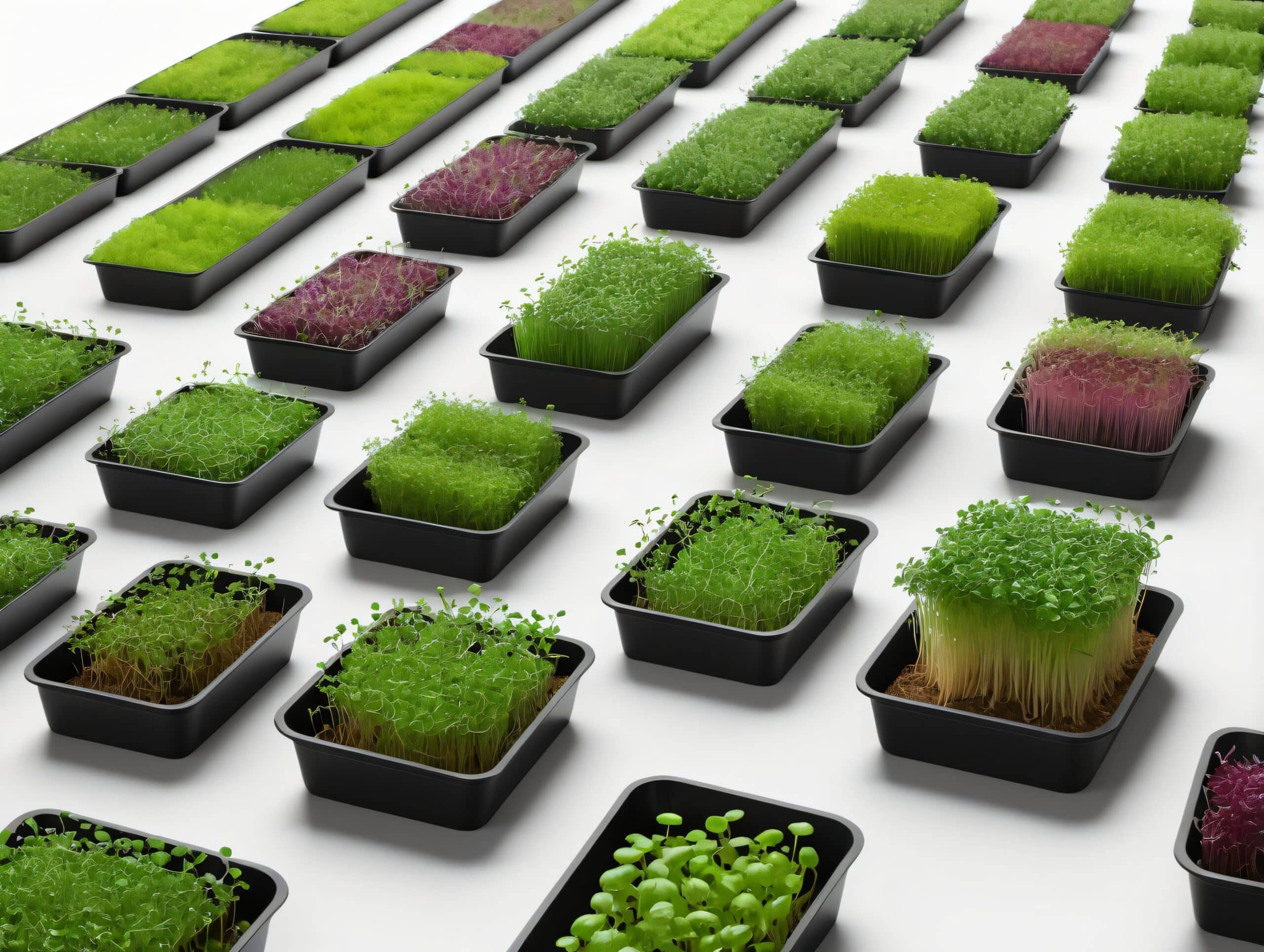Why do Microgreens Cost So Much?
Key Takeaways
- The variety and growing method of microgreens can influence their pricing, with rare or slow-growing varieties and specialized growing techniques leading to higher production costs.
- Production costs, including direct input expenses, labor costs, utility and facility overhead costs, and specialized equipment, contribute to the overall price of microgreens.
- Market demand and competition play a crucial role in determining microgreens’ pricing, with producers able to charge a premium due to increasing demand, but also needing to consider the competitive landscape.
Microgreens are increasingly popular in the culinary world, known for their vibrant colors, intense flavors, and nutritional benefits. However, their higher price compared to full-size vegetables often raises the question: why do microgreens cost so much? In this article, we will explore the factors that contribute to the higher pricing of microgreens.
Variety and Growing Method
The variety and type of microgreens can influence their pricing. Some microgreens, such as rare or slow-growing varieties, require more time and effort to cultivate, leading to higher production costs. Additionally, the growing method also plays a role. Microgreens grown hydroponically or using specialized growing techniques may incur additional expenses for equipment and resources, which can impact the final price.
Production Costs
The production costs of microgreens are a significant factor in determining their price. These costs include direct input expenses like seeds, trays, growing medium, and packaging. Labor costs for seeding, nurturing, harvesting, and packaging also contribute to the overall production expenses. Utility and facility overhead costs, such as water, electricity, and rent, add to the financial burden. Specialized equipment, like grow lights or climate control systems, may be required for optimal growth but come with a higher price tag.
Market Demand and Competition
Market demand and competition play a crucial role in determining microgreens’ pricing. The demand for microgreens has been steadily increasing due to their unique flavors and nutritional value. As a result, producers can charge a premium for this specialty product. However, the presence of competition can also affect pricing. Producers need to consider the competitive landscape and align their pricing strategies accordingly.
Packaging and Presentation
The way microgreens are packaged and presented can impact their price. High-quality packaging materials and attractive presentation can add to the overall production costs. Producers need to consider factors such as calculating packaging costs, evaluating premium options, estimating labor time, and considering wastage rates. These additional expenses can contribute to the higher price of microgreens.
Organic vs. Conventional
The choice between organic and conventional growing practices can also affect microgreens’ pricing. Organic microgreens often require additional certifications and compliance with organic standards, which can increase production costs. As a result, organic microgreens may be priced higher compared to conventionally grown ones.
Economic Factors
In addition to the factors mentioned above, several economic reasons contribute to the higher cost of microgreens. Firstly, microgreens are fragile and require optimal growing and storage conditions, which add to the overall cost. Secondly, the quantity of seeds needed to produce microgreens is relatively large compared to full-size vegetables. This factor increases the cost of production. Thirdly, microgreens have a short shelf life, which can lead to waste and increased expenses. Lastly, microgreens are often marketed as nutrient-rich superfoods, which adds to their perceived value and justifies a higher price point.
Conclusion
Microgreens cost more than full-size vegetables due to various factors. The variety and growing method, production costs, market demand, competition, packaging and presentation, and the choice between organic and conventional all contribute to the higher pricing. Additionally, economic reasons such as the fragility of microgreens, the quantity of seeds required, their short shelf life, and their marketing value as nutrient-rich superfoods also play a significant role. While microgreens may be more expensive, their unique flavors, intense colors, and nutritional benefits make them a sought-after ingredient in the culinary world.
Related Websites:
- Natural Wire – Microgreens Prices
- Microgreen Directory – Microgreen Market Analysis
- Microgreens World – How to Price Your Microgreens
- Rustic Wise – Why Are Microgreens So Expensive?
- Microgreens Corner – Why Are Microgreens So Expensive?
- Master Microgreens – Economics of Growing Microgreens
- BlueCart – Microgreens Industry
FAQs:
Q: Why do microgreens cost more than other greens?
Microgreens cost more due to the meticulous cultivation process involved. Specialized equipment, high labor costs, and limited availability contribute to their higher price compared to other greens.
Q: What factors influence the high cost of microgreens?
The cost of microgreens is influenced by factors such as their limited shelf life, high labor and production costs, the need for specialized equipment and materials, as well as market demand and supply dynamics.
Q: Are microgreens worth the higher price?
Absolutely! Microgreens offer exceptional nutritional value and unique flavors. Their popularity among renowned chefs and restaurants further highlights their worth. Despite the higher price, microgreens provide numerous benefits.
Q: How do microgreens compare to other greens in terms of pricing?
Microgreens are generally priced higher than other greens due to their specialized cultivation process and limited availability. However, their superior nutritional value and intense flavors justify the price difference.
Q: How can I enjoy microgreens within my means?
While microgreens may be pricier, you can still enjoy them within your means. Consider growing your own microgreens at home, which can be a cost-effective option. Alternatively, look for local farmers or markets that offer more affordable microgreen options.






